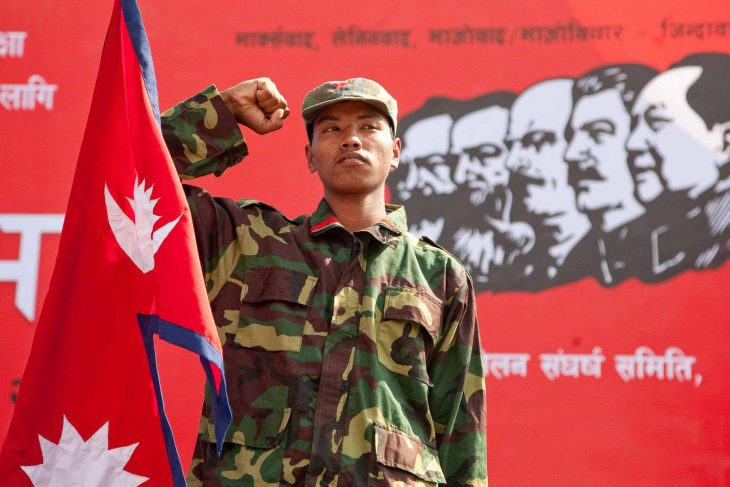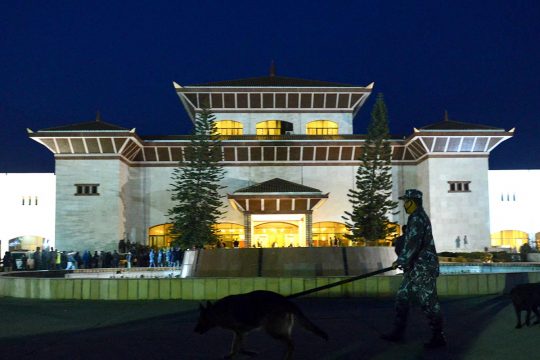Transitional justice mechanisms unfold in highly particular political contexts, often greatly constrained in what they are able to deliver. Indeed, the truth commission that has become the most visible signifier of a transitional justice process was originally conceived as providing truth where a comprehensive judicial process was not politically feasible in the short-term. In this sense truth commissions will always be imperfect vehicles for the hopes they carry, and one of the few guaranteed outcomes of such mechanisms is that victims and civil society will contest their value. In Nepal the creation of such a commission painfully demonstrates this.
In November 2006, a peace agreement was signed between the Maoists and the government formally ending a 10-year insurgency that left a legacy of more than 17,800 deaths, and 1,530 persons unaccounted for as a result of violations committed by both state forces and the Maoists. As part of an ongoing peace process the monarchy has been abolished and Nepal declared a secular democratic republic, with the Maoist Party a participant in democratic politics. The peace agreement also committed the parties to the creation of a Truth and Reconciliation Commission (TRC), alongside a Commission of Inquiry into Enforced Disappearance. On paper, the Disappearance Commission is tasked with investigating disappearances while the TRC investigates other incidents of gross human rights violations, but in practice, the functions, duties and powers of the Commissions are ill-defined. This strange mix of mechanisms is itself political in origin: the Maoists sought a focus on disappearances precisely because they had become a routine tactic of state security forces. Early in 2015 both the TRC and Disappearance Commission were finally created, with commissioners appointed according to their party political affiliations and impunity institutionalised through an amnesty clause.
International donors spent millions
Despite much of the initial enthusiasm for TRC-based transitional justice processes, linked predominantly to the perceived success of the South African TRC, such a process – driven by ‘truth for amnesty’- is nowadays considered to violate international legal obligations to prosecute mass human rights violations. International donors have spent millions of dollars in Nepal funding domestic human rights organizations to advance an advocacy agenda prioritising prosecutions, while victims’ groups have struggled to raise the resources simply to meet regularly. This external support has enabled an educated and metropolitan human rights community in Nepal to craft a particular politics of transitional justice, which focuses narrowly on identifying the victims and perpetrators of acts of violence during the conflict while ignoring the social and economic violence which drove the conflict. As a result, the violations of social and economic rights are denied as a justice issue and the practice of human rights itself becomes exclusive, transposing transitional justice from the political and social to the legal sphere. This becomes visible in attitudes towards the two commissions. Because domestic rights NGOs and Western donors perceive justice as largely legally defined, they saw the amnesty provisions of the TRC law as denying justice and called for a boycott of the Commissions. Recently, the Supreme Court in Nepal excluded amnesty as an option for the Commissions. Nonetheless, the demand for boycott reflects a new legalistic absolutism that both dominates contemporary transitional justice practice and denies its past, when amnesty was common.
NGOs boycott
A boycott also recalls what happened in Kenya around the Truth, Justice and Reconciliation Commission (TJRC), where NGOs in the capital and international donors boycotted the process, while most (but not all) provincial NGOs and victims chose to engage with it. In Kenya, a broader engagement with the commission would not have led to a significant judicial process, but would have increased the capacity of the TJRC to tell truths, including those that are uncomfortable for those in power, and to engage effectively with victims. There will not be any second commission process in Kenya in the near future, and prosecutorial justice for victims also remains remote. The analogy with Nepal is uncomfortable: it teaches that in such a political environment the results and impact of a truth process in a challenging political environment will always be unsatisfactory, but that a critical engagement can push it to deliver more than it otherwise might. In contrast, disengaging completely would appear to ensure that a commission delivers very little. The movement to boycott appears to deny what puts the transitional into transitional justice: the narrow political space of states in transition. Amnesty is an articulation of the political facts of Nepal: all major political leaders and the security forces are committed to ensuring their impunity. In Nepal since the war, as in the Kenyan context around the TJRC, there was no formal amnesty in place: political conditions were sufficient to enforce a de facto amnesty, as they will be for the foreseeable future. While the boycott presumably seeks to advance legal justice, there appears no route to making this happen. Rather than comparing the TRC law to an abstract and prescriptive ideal, a question should be asked as to what most effectively advances the cause of justice, as defined by those most concerned with it. Victims appear to want to engage with the commissions for a range of reasons that include a need to be acknowledged by the state, to tell unheard stories, and in the hope that truth and reparations may result.
The Commissions would appear to represent an opportunity to completely change how the discussion of past violations is approached. Whilst advocacy by rights agencies in Nepal has been elite-led and largely Kathmandu-oriented, the commissions will have to work throughout the country, at the very least collecting testimony from all communities affected by the conflict. This would appear to represent an opportunity to broaden the struggle against impunity and for justice of all sorts, by engaging traditionally marginalized victims and communities who often prioritize reparations and socio-economic relief and have little faith in the rule of law. More than this, it promises the engagement of a far broader constituency and their empowerment in ways that can potentially transform rights advocacy in Nepal. For example, donors have for the first time funded victims’ organisations, supporting a broad coalition of victims’ groups and offering the possibility that those from outside the dyad of the government and the Kathmandu rights community might begin to shape agendas.
In Nepal, a critical engagement with the two commissions can permit victims to tell their stories and to drive a relationship with the transitional justice process and the authorities that they have been denied so far. Such an engagement can act to further mobilise victims, and allow them – for the first time - to be at the centre of the campaign for a justice defined on their terms. But such an engagement will also allow those most affected by the conflict to emphasise the extent to which the two institutional mechanisms are only a small part of what is required to address the breadth of historic rights violations in Nepal. Transitional justice and a broader accounting for the past demands a set of policies from the government that go far beyond both the two commissions and what rights agencies in Kathmandu have been advocating for. Victims and their communities want not only acts of violence to be addressed, but also the chronic structural violence of poverty and exclusion which constitutes the most widespread historical rights violation. Indeed, it is precisely the failure to address such issues that will ensure future conflict.
Centre for Applied Human Rights, University of York, www.simonrobins.com






